Hitchhiking Bacteria Might Help Their Host Navigate Via Magnetic Fields
Hitchhiking bacteria might help their host navigate via magnetic fields
Deep in the mud of the Mediterranean Sea, scientists have caught microscopic protists dancing to a strange beat—the beat of Earth’s magnetic fields. Now, a new study reveals how these tiny clusters of cells orient themselves along those fields: by letting magneto-sensing bacteria hitch a ride on their outer membranes.
Researchers used microscopes to examine protist-packed sediment taken from the bottom of the Mediterranean Sea near Carry-le-Rouet, France. When they placed a magnet with its north pole facing a water droplet from the sediment, the hundreds of protists inside immediately began to swim toward the droplet’s edge. When the researchers reversed the magnet so its south pole was facing the droplet, the protists fled in the other direction (above).
More Posts from Thejoyofscience and Others

This bad little boy is super rare to find!!! This is a mitotically active cell present in peripheral blood circulation from a dog - only the second one I have ever seen!!
As a game, in the diagnostic lab we yell KABLAM! anytime we see a mitotic figure. The first one to say kablam wins :-P We should so turn it into a drinking game…
This is probably silly, but would you mind breaking down the genders of bees in the hive and some of the roles the various genders take on? I've heard mixed things about what gender drones are, males dying immediately after sex with the queen (?), and I'm wondering how and when the hive produces another queen! Thank you so much, your patience and knowledge are hugely appreciated. Also, are there any cool insects that can change sex like frogs and fish occasionally can?
There is no such thing as gender in animals besides humans and gender roles aren’t based on anything other then misogyny and they don’t exist within animals.
What you’re specifically asking about is called castes, and your typical eusocial species of bee such as a honeybee have three castes; workers, drones and a queen.

A queen’s function within the hive is to lay eggs, while a drones only purpose is to mate. The workers are tasked with every other role within the colony including cleaning, disposing of the dead or diseased, nursing, guarding and protecting the hive, foraging for pollen and nectar, and so on.
The queen lays two types of eggs; haploid (half the amount of chromosomes which is 16 in bees) and diploid (both sets of 32 chromosomes) eggs. The haploid eggs become drones meaning that they have no fathers, this is a type of parthenogenesis called arrhenotoky.
The normal diploid eggs (chromosomes sets from the queen + one of the drones that mated with her) can become either workers or a new queen. Every single diploid egg has the potential to become a queen. It is diet in the larval stage that determines if the egg will be a queen or a worker.
The workers will create a new queen themselves by building a specific brood comb called a queen cup, once the old queen has laid an egg in them, the workers will begin feeding them entirely on royal jelly: a secretion from the hypopharynx of nurse worker bees while larvae that will become workers are fed some royal jelly but mostly a mixture of pollen and nectar called bee bread. Because the royal jelly is so protein-rich it provides the future queen larvae with the energy to develop into a sexually mature females.

Once the queen emerges from her cell fully-mature she will seek out other recently hatched virgin queens and unemerged queens and killed them as they are rivals: there can only be one queen after all. When the virgin queen is the sole survivor she’ll then leave the hive for the first (and often the last and only time) for her mating flight. Bees mate on the wing, so swarms of drones will chase after her competing for the chance to mate with the single queen, these are called drone comets.
If a drone is lucky enough to mate with the queen, he’ll insert his penis into her before it is torn off (and often left inside the queen). This causes the drones to fall to the ground and die shortly after. The queen will mate with multiple drones sporing their sperm inside an organ called the spermatheca in which she uses to fertilise and lay her eggs.
Here’s a queen with the penis of a drone still plugged inside her, otherwise known as the mating sign.

Not all drones get this chance to mate, and often die outside the hive because they’re evicted for reasons like lack of resources, the hive not being healthy / strong, or it’s the end of the bee season going into winter. Drones are relatively expendable within the hive and are useless at feeding themselves so they die pretty quickly.
There was a sensitive pragmatic question which needed to be answered, however. To put it bluntly: Was Arya going to be naked on camera? Many cast members have appeared nude on the show, though typically signed on when they were at least 18 years old (and often agreed to nudity as part of their deal). The 22-year-old Williams joined Thrones when she was 11 and has grown up in front of fans. Williams says the showrunners let her decide precisely how much to show. “David and Dan were like: ‘You can show as much or as little as you want,’” Williams says. “So I kept myself pretty private. I don’t think it’s important for Arya to flash. This beat isn’t really about that. And everybody else has already done it on the show, so…”
Still, when it came time to film the encounter, Williams had to be naked-ish on set, and that was a naturally a bit awkward. “In the beginning, everyone was really respectful,” she says. “No one wants to make you feel uncomfortable which kind of makes you feel more uncomfortable, because no one wants to look at anything that they shouldn’t look at which in turn makes you feel like you look awful because everyone is kind of like—” [Williams averts her eyes]. “You want people to act more normal.”
Continues Williams: “Then [the scene] was rushed. We were [directed by] David Nutter, who has a habit of speaking fast anyway. By the end we’re rushing to finish the scene and David is going, ‘Okay, you’re going to come in and do this and do that and, great, take your top off’ — and then walked off. And I’m like … ‘Okay. Let’s do it.”
Dempsie suggested the experience was strange for him too for given how long he’s known Williams, who’s about a decade younger than him. “It’s obviously slightly strange for me because I’ve known Maisie since she was 11, 12 years old,” says the 31-year-old actor. “At the same time, I don’t want to be patronizing toward Maisie — she’s a 20-year-old woman. So we just had a lot of fun with it.”
But Williams says what’s most important to her about Arya’s battle-eve night of romance wasn’t reading the scene or even filming it, but rather what this moment meant for her character. Year after year, Arya has been laser-focused on survival and training and revenge. Being with Gendry meant that, for one night at least, Arya had an experience that put her back in touch with her humanity.
“It was really interesting because it’s a very human relationship for Arya,” Williams says. “This is something she’s stayed away from, an emotion we’ve never really seen her engage with. David and Dan were like, ‘It’s the end of the world, what else would you have her do?’ This may be is a moment where Arya accepts death tomorrow, which she never does — ‘Not Today.’ So it was that moment where she says, ‘We’re probably going to die tomorrow, I want to know what this feels like before that happens.’ It’s interesting to see Arya be a bit more human, speak more normally about things people are scared of.” — Maisie Williams discusses Arya’s surprise Gendry scene
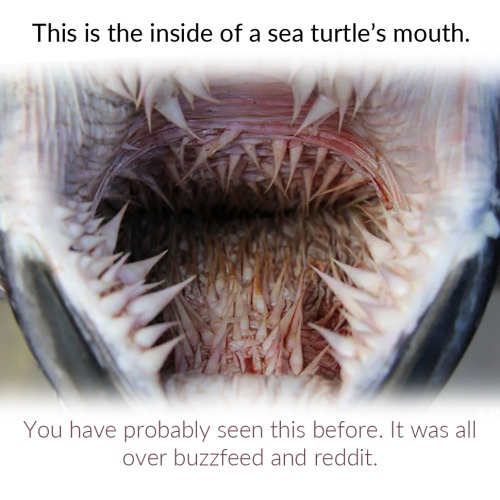
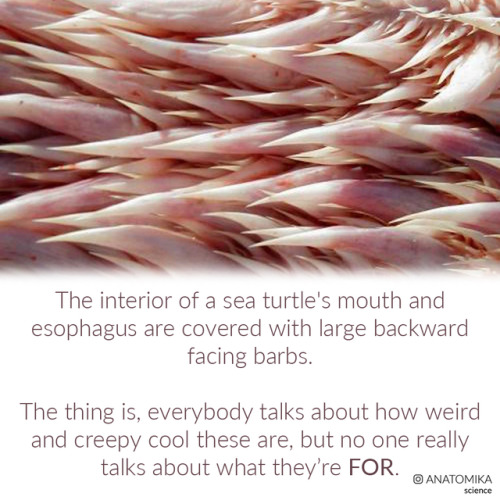
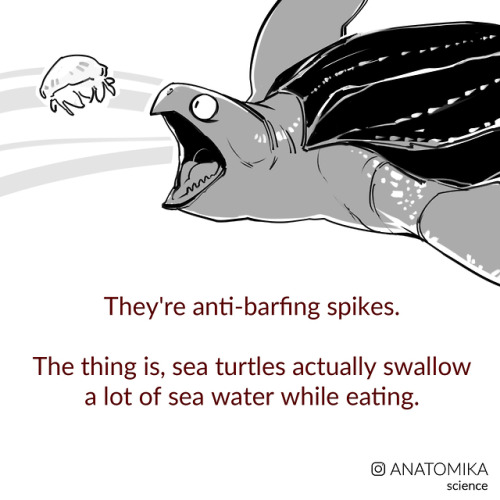
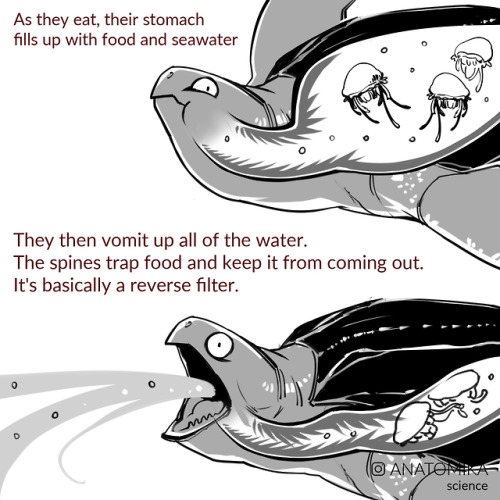
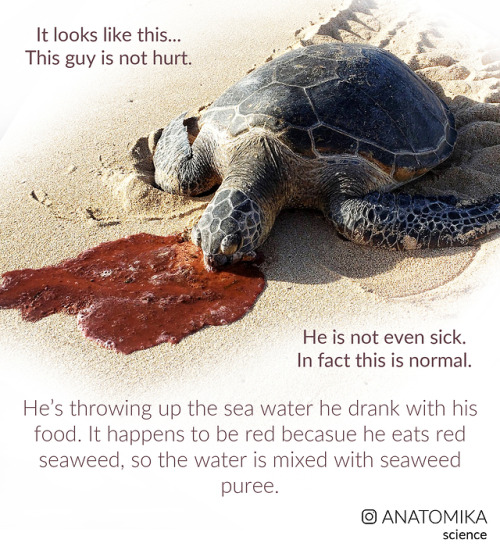
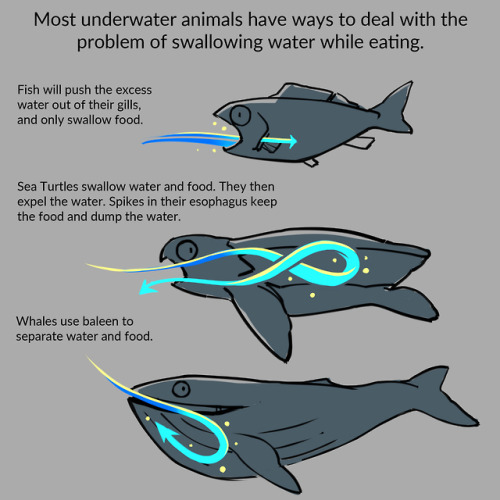
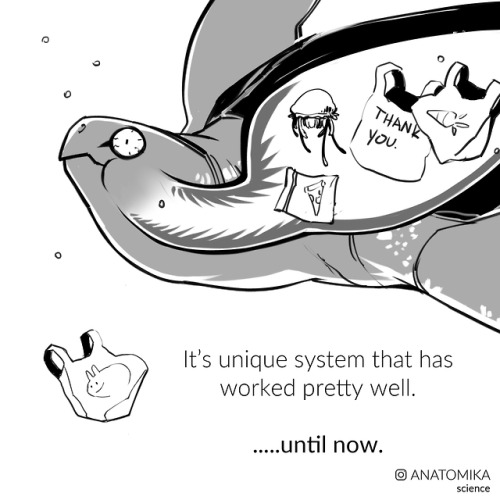
ANTI-BARFING SPIKES.
This is why they have such a problem with plastic bags. It’s because the unique structure of their esophagus makes it so that they can’t get rid of them.
Other places to see my posts: INSTAGRAM / FACEBOOK / ETSY / KICKSTARTER
My best friend is defending next month, and he has decided to dedicate his thesis to his son and daughter (who are cats) and to his godson (who is my cat). I will never be sad again. This has cured all that ails.


Colonial rotifers showing eyespots and corona, magnification 200x - 500x. Ralph Grimm.





It was an honor having our guests speakers at our #Immunotherapy Symposium, including Nobel Laureate James Allison #BioLegend


Right lateral thoracic wall mass from a 10 year-old, female-spayed, Golden Retriever. Approximately six months ago the owner noticed a small, firm swelling on the patient’s right chest. No doubt it grew with time, as it finally got large enough for the owner to become truly concerned! The patient is clinically healthy otherwise.
*
The most prominent feature on the cytology were these gorgeous globules of magenta, streaming material! In fact, the entire slide was imbued with this color when you looked at it without a microscope. The substance is most likely matrix produced by cancer cells. Matrix of this color is commonly observed in chrondrosarcomas. Occasional malignant spindle-shaped cells were found imbedded in the matrix.
*
Diagnosis: Chondrosarcoma. Well , that’s the most likely diagnosis given the location and appearance of the neoplastic cells and matrix! Other possibilities include a myxosarcoma (which produces a mucous like material!) or osteosarcoma (malignant primary bone tumor). Chondrosarcomas are often regionally invasive but rarely metastasize. If the owner is on board with a chest wall resection, the patient will have a good prognosis :-)

Hematopoietic stem cells ready for re-injection. Image from Steve Gschmeisserner.




-
 transgenderfivepebbles liked this · 7 months ago
transgenderfivepebbles liked this · 7 months ago -
 mxchaelangelo liked this · 5 years ago
mxchaelangelo liked this · 5 years ago -
 thoughtnebula liked this · 5 years ago
thoughtnebula liked this · 5 years ago -
 secondsnowfall liked this · 6 years ago
secondsnowfall liked this · 6 years ago -
 toastmcroasty reblogged this · 6 years ago
toastmcroasty reblogged this · 6 years ago -
 raindragonwing reblogged this · 6 years ago
raindragonwing reblogged this · 6 years ago -
 panda-poes reblogged this · 6 years ago
panda-poes reblogged this · 6 years ago -
 bbbbbbbees-blog reblogged this · 6 years ago
bbbbbbbees-blog reblogged this · 6 years ago -
 falselament reblogged this · 6 years ago
falselament reblogged this · 6 years ago -
 vctrndr liked this · 6 years ago
vctrndr liked this · 6 years ago -
 arkadasy liked this · 6 years ago
arkadasy liked this · 6 years ago -
 marklakshmanan reblogged this · 6 years ago
marklakshmanan reblogged this · 6 years ago -
 inesagn reblogged this · 6 years ago
inesagn reblogged this · 6 years ago -
 you-and-me-and-a-high-balcony liked this · 6 years ago
you-and-me-and-a-high-balcony liked this · 6 years ago -
 llort liked this · 6 years ago
llort liked this · 6 years ago -
 vuutarros reblogged this · 6 years ago
vuutarros reblogged this · 6 years ago -
 intergalacticedgelord liked this · 6 years ago
intergalacticedgelord liked this · 6 years ago -
 mrprocrastin8 liked this · 6 years ago
mrprocrastin8 liked this · 6 years ago -
 ankewehner liked this · 6 years ago
ankewehner liked this · 6 years ago -
 sciencenerd4-blog liked this · 6 years ago
sciencenerd4-blog liked this · 6 years ago -
 kydtyk reblogged this · 6 years ago
kydtyk reblogged this · 6 years ago -
 kydtyk liked this · 6 years ago
kydtyk liked this · 6 years ago -
 bucketodoom reblogged this · 6 years ago
bucketodoom reblogged this · 6 years ago -
 draphaelc liked this · 6 years ago
draphaelc liked this · 6 years ago -
 space-parasite liked this · 6 years ago
space-parasite liked this · 6 years ago -
 smoovsailing reblogged this · 6 years ago
smoovsailing reblogged this · 6 years ago -
 bucketodoom liked this · 6 years ago
bucketodoom liked this · 6 years ago -
 rhawk852 liked this · 6 years ago
rhawk852 liked this · 6 years ago -
 abscura reblogged this · 6 years ago
abscura reblogged this · 6 years ago -
 abscura liked this · 6 years ago
abscura liked this · 6 years ago -
 redhousehead reblogged this · 6 years ago
redhousehead reblogged this · 6 years ago -
 redhousehead liked this · 6 years ago
redhousehead liked this · 6 years ago -
 tehwhovian liked this · 6 years ago
tehwhovian liked this · 6 years ago -
 intelligentliving reblogged this · 6 years ago
intelligentliving reblogged this · 6 years ago -
 vividpanda liked this · 6 years ago
vividpanda liked this · 6 years ago -
 mandoblando reblogged this · 6 years ago
mandoblando reblogged this · 6 years ago -
 mandoblando liked this · 6 years ago
mandoblando liked this · 6 years ago -
 brunocr10 reblogged this · 6 years ago
brunocr10 reblogged this · 6 years ago -
 brunocr10 liked this · 6 years ago
brunocr10 liked this · 6 years ago -
 sporadic-science reblogged this · 6 years ago
sporadic-science reblogged this · 6 years ago -
 tib1971 liked this · 6 years ago
tib1971 liked this · 6 years ago -
 senoritafish liked this · 6 years ago
senoritafish liked this · 6 years ago -
 karltface liked this · 6 years ago
karltface liked this · 6 years ago -
 portrayedby liked this · 6 years ago
portrayedby liked this · 6 years ago -
 missy-jabby-junks reblogged this · 6 years ago
missy-jabby-junks reblogged this · 6 years ago -
 missy-jabby liked this · 6 years ago
missy-jabby liked this · 6 years ago
An assortment of scientific things from the wonderful world of biology
77 posts